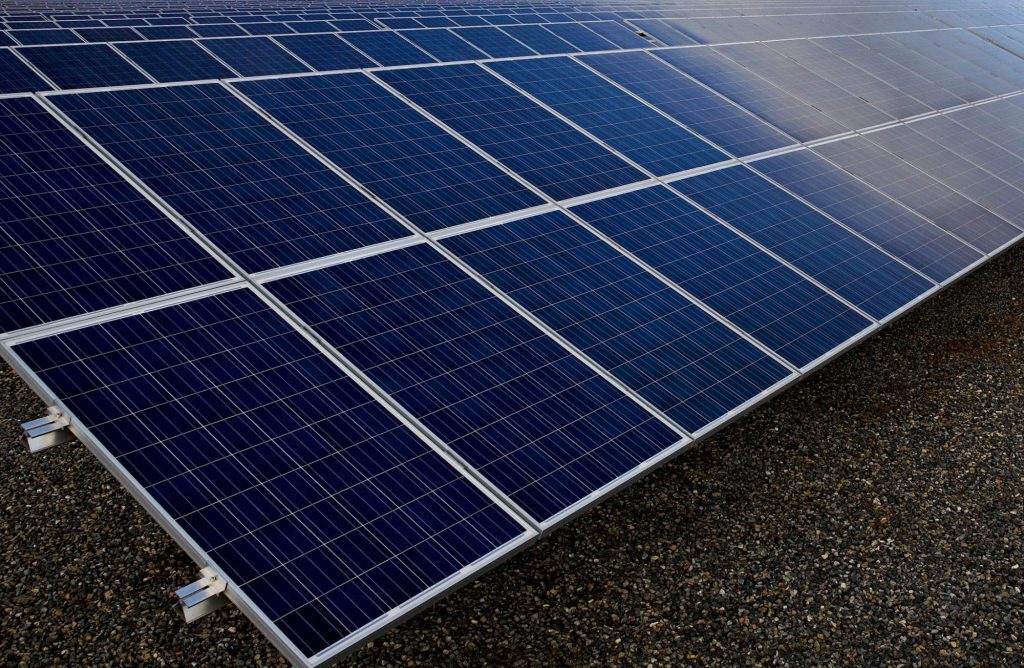
China’s insatiable appetite for solar power led to a surprise increase in global clean-energy investment last year even as U.S. President Donald Trump pushed to undermine pollution rules and curbs on coal.
About $333.5 billion poured into renewable energy and cutting-edge power technologies, up 3 percent from 2016 and 7 percent short of the record set in 2015, according to Bloomberg New Energy Finance. Almost half went to solar projects, and China’s investment accounted for 40 percent of the total.
The figures confounded strong headwinds to further increases in investment. Prices for solar panels and wind turbines are falling rapidly, while the U.S., Germany and Poland were among the countries loosening policies designed to curb the dirtiest fossil fuels. Developers speculating they will reap subsidies in China along with higher spending from Australia to Mexico helped offset declines in longer-established markets across Europe.
“The 2017 total is all the more remarkable when you consider that capital costs for the leading technology – solar – continue to fall sharply,” said Jon Moore, chief executive officer at BNEF. “Typical utility-scale PV systems were about 25 percent cheaper per megawatt last year than they were two years earlier.”
Equipment such as solar panels and wind turbines are getting more affordable as they are increasingly mass-produced. The sliding cost has opened up new markets beyond rich countries, which typically were the early adopters of renewables when the industry was young. Now, solar and wind farms are an increasingly cost-effective way to electrify places with uncertain access to the grid. Projects are being built to power everything from chemicals plants in the Netherlands to suburbs of Kabul, Afghanistan.
China spent $133 billion across all clean energy technologies, 24 percent more than in 2016. The world’s biggest market for renewables has been working to contain the solar boom by curbing utility-scale projects built outside of allocated quotas. Instead, it saw more panels installed in industrial parks, where energy-intensive companies sought to meet some of their own demand and reduce costs.
At the end of November, photovoltaic power installations totaled almost 126 gigawatts in China, up 67 percent from a year earlier, according to the latest data from National Energy Administration. Newly added distributed solar capacity, which is used to meet power demand near where it’s generated, was 17.23 gigawatts in the first 11 months of last year, nearly four times more than the same period in 2016.
“China’s boom is still fundamentally irrational,” Jenny Chase, chief solar analyst at Bloomberg New Energy Finance, wrote in a note to clients. “The mechanism to collect the subsidies to be paid out has not been determined. However, it looks as if Chinese state-owned developers and investors will build them anyway on the assumption that the government will find a way and, if not, compensation for the power itself will prevent a total loss.”
The U.S. invested $57 billion, making it the world’s second-biggest backer of renewables. Developers channeled 1 percent more capital into clean energy than the previous year even though Trump worked to gut emissions rules governing power plants.
Rising Investment
Investment also quintupled in Mexico and more than doubled in Australia. A major coal producer, sun-drenched Australia has previously rebuffed clean energy and is beginning to spur several major projects. Recent policy changes in Mexico liberalized parts of the nation’s energy industry and sparked a boom for renewables there.
These gains offset declines in countries such as Germany, the U.K. and Japan, which saw drops in investment as subsidy programs were scaled back.
Other figures on renewable energy finance in 2017 from the report include:
Most of the capital flowing into the sector was asset finance of utility-scale projects, making up 65 percent of the total. Wind power projects took in $107.2 billion last year, down 12 percent from 2016 The largest solar projects to reach financial close were both in the United Arab Emirates, which will have a combined capacity of 2 gigawatts and draw investment of $1.8 billion. Clean energy companies raised $8.7 billion of equity from public markets, down 26 percent from the previous year. Venture capital and private equity investment into the sector fell by 38 percent to $4 billion, the lowest point since 2005, as clean energy is increasingly seen as a mature, bankable industry. Capital flowing into newer technologies such as smart grids and energy storage reached a record at $49 billion. About half of it was asset finance of smart meter installations and lithium-ion batteries. Acquisitions and refinancings of clean energy projects also hit an all-time record, rising 4 percent to $128 billion.
“It is notable that acquisition activity in clean energy has been in excess of $100 billion in each of the last three years,” said Abraham Louw, clean energy economics analyst at BNEF. “The fact that generating assets, in particular, are in growing demand from buyers is a sign of a maturing sector.”
Recommended for you
